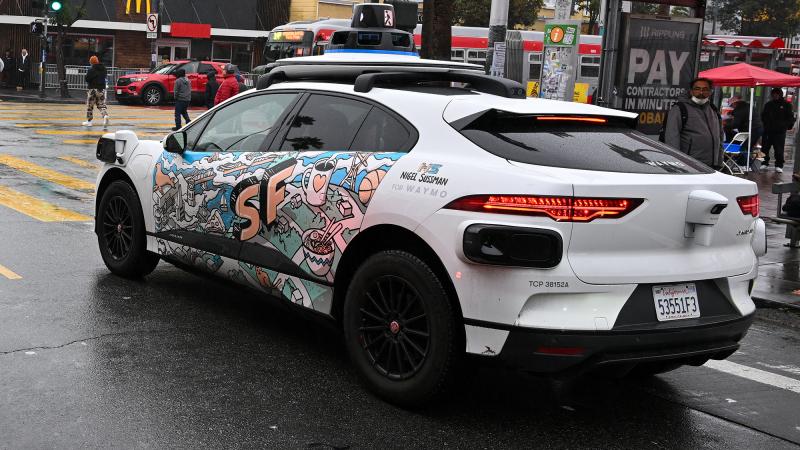The biotech industry has a love-hate relationship with the J.P. Morgan Healthcare Conference in San Francisco. Every year, thousands gather on the Golden Gate City and battle rain, hail, floods, what have you, just to make billion-dollar deals.
This year, flight disruptions were the key challenge for conference goers, spurred by Alaska Airlines’ accident days before the industry was set to descend on San Francisco. One of the company’s Boeing 737 Max 9 aircraft flying from Portland, Ore., to Ontario, Calif. experienced a “rapid depressurization event.”
Or to be clear, a plugged exit door blew out mid-flight, sucking out bits of seat, people’s clothing and belongings. Cell phones were found scattered about the countryside. The oxygen masks dropped. The cockpit door sprung open. It was, by all accounts, every flyer’s worst nightmare.
No one was seriously injured in the incident, luckily, although there were reports of concussions, ear bleeding (sounds serious to me) and headaches. But this is the event that preceded all J.P. Morgan travel this past weekend. It was top of mind, ripe for dark jokes about the conference everyone loves to hate.
For Roviant CEO Matt Gline, J.P. Morgan is squarely in the hate-hate category. He told Fierce Biotech on the sidelines that, while he didn’t fly Alaska on the way to J.P. Morgan, he did sit in the exit row. He was of course consumed by thoughts of the blowout. But for him, what would have been worse would be attending the conference first, then experiencing a “rapid depressurization event.”
He couldn’t imagine anything worse than that.
Follow the Fierce team's coverage of the 2024 J.P. Morgan Healthcare Conference here.
Now, this accident happened days before I was set to fly Alaska to San Francisco. I picked the flight because it was non-stop, Washington Reagan to SFO. Easy peasy. Our reporter Max Bayer, too, opted for the ease of the one-and-done flight.
I was never on a MAX plane. But Max, fittingly, was. He managed to take off no problem out of New York, an hour before me. With work to do on the plane, we both bought a WiFi pass and were able to chat. As Max neared landing in San Francisco, he told me that he was happy the door to his plane was still attached.
The blood drained out of my face. I still had three hours to go.

Anyway, I made it safe via my trusty Boeing 737-800. So did Max on his MAX. Many members of the Fierce crew began receiving notifications Wednesday that flights, particularly on United Airlines, were being canceled due to the grounding of the MAX 8/9 fleet. One of our team members got rerouted home via a fun night at the Las Vegas Airport.
Hesitant flier, Publisher Rebecca Willumson, offered to rent a bus with me and drive the 2,813 miles to Washington, DC. As much as I love a road trip, I opted to take the four-and-a-half-hour flight home.
We began asking each of our interviewees if they had flight disruptions on Wednesday afternoon, spurring panic as people realized the issue was still ongoing. We hope everyone made it out safely.
Another key safety concern of J.P. Morgan was the driverless cars taking the San Francisco streets by storm. Everywhere you went, San Franciscans were grumbling about the bulky CUVs with spinning sensors pasted onto all angles of the car.
This reporter encountered one on her way back from an interview to Fierce HQ. Leaving a hotel, I looked both ways and boldly stepped out into the street after one had passed by, only to hear a friendly bellhop behind me shout “Whoa whoa whoa” and chase after me.
“Be careful of those driverless cars, Ma’am! They don’t like pedestrians!” he cried.
What do you mean, they don’t like pedestrians?! I thought. Turns out a driverless car from a previous company had tragically killed a pedestrian on a right turn. The new company, Waymo, had returned the modality to the streets; however, San Franciscans don’t seem to be all that welcoming of their new rides.
Maybe the friendly bellhop was looking for a tip—I had none to offer as I had been fleeced of my only $40 in cash by a rather crabby cabby a day earlier who grumbled when I pulled out my credit card—but he escorted me across the road and opened the door of my Uber for me, ensuring I got in safely.
We then set off following the driverless car, which had found some riders, and came to a right turn. My driver began grumbling. “Oh they don’t like right turns,” he said. Due to the pedestrian fatality, Waymo had put in new safety checks for right turns, making the new cars much more hesitant and cautious. We waited through two turns of the light—my Uber driver fuming—until it finally lurched forward.
The car sped off ahead, leaving us at a red light. We watched it drive up to a delivery van, stop suddenly and seem to struggle to navigate the lane change needed. Three cars hurriedly got out of its way as the Waymo car navigated the lane change and drove up towards Nob Hill and out of sight.
I was left with a key question: Why?